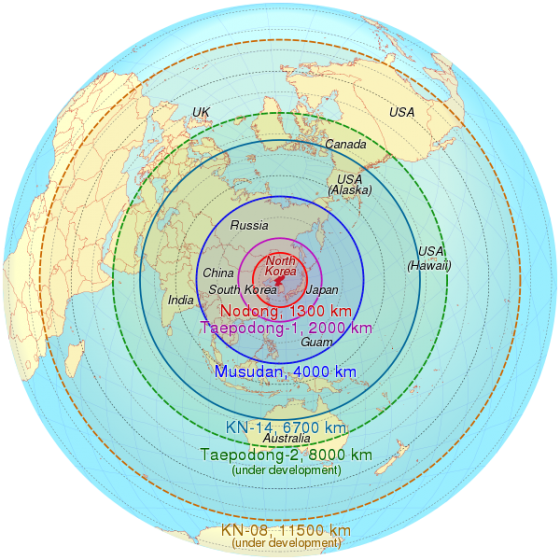BESA Center Perspectives Paper No. 680, December 10, 2017
EXECUTIVE SUMMARY: North Korea’s missile program demonstrates Pyongyang’s ability to build a reliable deterrence capability against the US – but the program requires a huge budget. Pyongyang should be able to fund the industry in the short term, but sanctions and costs might eventually force it either to look for new income sources or to offer tactical concessions.
The CSIS has published a report on North Korean missile launches from the era of Kim Il-sung in 1984, through Kim Jong-il, until today, under the Kim Jong-un regime. While during the Kim Il-sung era, the number of missiles launched by North Korea was very limited, that figure had increased dramatically by the end Kim Jong-il’s regime. During Kim Jong-un’s first five years in office, however, Pyongyang launched more missiles than his grandfather and father put together.
Over the years, the North Korean missile industry has manufactured an impressive range of missiles. They were developed and upgraded partly by reverse-engineering Russian missiles, partly with the assistance of foreigners, and partly through the efforts of North Korean engineers. Pyongyang has been able to manufacture short-, intermediate-, and long-range ballistic missiles (for example, the Hwasong-15 ICBM) and surface-to-sea missiles, and has shown itself capable of a submarine ballistic missile launch.
The diversity of North Korea’s missiles demonstrates the country’s technological achievement over the years, but also raises questions about the program’s goals, funding, and cost.
Pyongyang’s primary goal in assembling its missile arsenal is deterrence. It knows that if the US strikes North Korea with its full military power, North Korea can’t possibly win. Pyongyang hopes China will restrain the US, but can’t build its deterrence entirely around either conventional weapons or Chinese deterrence.
North Korea knows it can deter Washington and Seoul by threatening to launch missiles at US bases in South Korea, Japan, and Guam and ICBMs at the US mainland. It is aware of its inferiority in air power, which is why it invests more in its now formidable missile industry than in its air force.
The missile defense industry is very expensive – so much so that few states possess an independent missile complex. Not only is a costly infrastructure required, but the state must establish research centers, schools, and colleges to educate workers and scientists. It is estimated that more than 15,000 people are employed in the North Korean missile complex.
Although labor costs in North Korea are very low compared to other missile industries around the world, it is still very costly to fund thousands of workers on top of infrastructure costs. Another expense is the cost of imported fuel and parts for the missiles, which, due to international sanctions, have become more expensive for North Korea.
The North Korean missile industry is kept afloat through the reallocation of national budget funds dedicated to education and civilian projects, as well as income from the country’s missile and light ammunition exports to the Middle East and Africa. The “Arab Spring” and increasing sanctions, especially the interceptions of North Korean missile shipments, have decreased missile exports and increased costs. The growing sanctions will force Pyongyang to look for other sources with which to fund its missile industry.
The successful launch of the Hwasong-15 will upgrade North Korea’s deterrence, but at the same time, it will force the US to upgrade its own deterrence in response. This could lead to an arms race between Washington and Pyongyang as well as other states in northeast Asia. While Washington can afford to upgrade its deterrence versus North Korea, Pyongyang will have difficulty. In the long run, this might force Pyongyang to negotiate tactically with Washington. If handled with care, such negotation could allow North Korea to lower the cost of sanctions without giving up its nuclear or missile capabilities.
Dr. Alon Levkowitz, a research associate at the Begin-Sadat Center for Strategic Studies, is an expert on East Asian security, the Korean Peninsula, and Asian international organizations.
BESA Center Perspectives Papers are published through the generosity of the Greg Rosshandler Family


